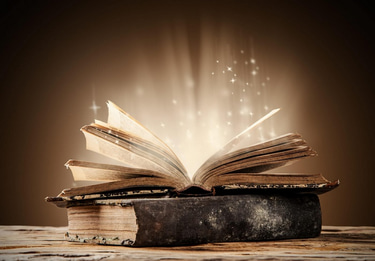Dream Sequences in Novels: A Blessing or a Curse?
11/9/20254 min read


Using Dream Sequences
When envisioning a scene, one aspect novelists must grapple with is the best narrative technique to convey the emotion, tension, or character's inner thoughts at that point in the greater story. In my debut novel, AWAKENING, I made limited use of a writing technique often recommended against (see for instance: [1], [2], and [3]), if not all out shunned (see [4]): dream sequences. While there are some cases when using dream sequences are an obvious disservice to the reader, I questioned if they should always be avoided? Where there not situations when dream sequences can act as a powerful tool to enriches the storyline?
No Dreams Here
Two common arguments against dream sequences (and, in some instances, their close cousins flashbacks and hallucinations) is that they detract from the main narrative and/or lead to reader confusion. A dream sequence that opens or closes a scene can, at best, mislead a reader, if not otherwise force them into spending time dissecting what happened instead of enjoying the story. In a similar way, a dream sequence that interrupts the storyline may leave a reader wondering about the relevance of the events that unfolded just before and just after the dream sequence.
Further, overuse and/or misuse of dream sequences often read as a lazy way for authors to avoid conflict or convey character emotion. No doubt, badly written dream sequences--no matter how few or many exist--will end with a reader abandoning your book. Nothing will frustrate a reader and leave them feeling cheated more than the revelation that what they just read was "all a dream", especially when that is the final twist of your novel. For these reasons, it is easy to concur that dream sequences should:
Never be used as the big reveal at the end of your story (i.e. everything you just spent hours reading was just a dream) or a chapter's ending twist.
Never be used (except in some rare cases, such as a book about dreams) as the opening of a novel or, arguably, opening of a chapter.
Never used as filler, as a means of transition, or when a non-dream sequence can convey the same or similar meaning or story progression.
But Movies Utilize Dreams All the Time
Since their inception, countless movies have employed dream, flashback, or hallucination sequences to convey aspects of the underlying story. Undoubtedly, the visual nature of movies allows such devices to be affective. Nevertheless (and with few exceptions), the foundation of a movie is a written script. This in mind, certainly there must be times they can be appropriate for novels and other written works.
Used sparingly, dream sequences can offer a unique glimpse into a character’s psyche, revealing deeper fears and desires that the author may want to portray. For example, a protagonist’s nightmare about failure could highlight their insecurities, making their eventual triumph all the more impactful.
Another valid reason to include dream sequences is to blur the lines between reality and imagination, contributing to a story’s overall theme. In magical realism novels, for instance, dreams often serve to enhance the fantastical elements, immersing readers in a vivid alternate reality where the ordinary meets the extraordinary.
Additionally, dream sequences can be strategically placed to foreshadow important events or create suspense. By providing cryptic hints or symbols during a dream, an author cultivates an air of mystery that keeps readers engaged and eager to decipher the clues.
In considering the use of a dream sequence, the author should always place themself in the seat of the reader and question how they would feel coming upon the sequence at that point in the story. If the sequence still seems appropriate, the author should further weigh whether the same message can be conveyed outside of a dream sequence. Only if that answer is a resounding no, then proceed, using great care to present the sequence in a clear, meaningful manner.
We Dream. Shouldn't Characters?
Dream sequences within novels are not strictly good or bad. As with all writing techniques, the value of a dream sequence comes down to how its been employed. Well-written, seamless dream sequences can enhance a storyline by contributing to character development, theme, or narrative tension. Badly written, the reader will find themself confused, if not frustrated, and likely shoving your novel to the side.
The key to using dream sequences is moderation and intention. Properly executed, a well-placed dream sequence should refresh the narrative and elevate the story. Anything less, the reader will end up exhausted. If a dream sequence would serve your story well—go for it! Just ensure it aligns with the overall flow of your narrative and truly adds the intended value.
So, what do you think? As a reader, do you enjoy dream sequences or are they just distractions? Fellow writers, have you employed this technique or do you avoid it at all costs? In either case, why; and if you have used dream sequences, how did your agent, editor, or readers respond? Did I fit them well within my own novel? Let me know.
EXAMPLES
[1] Four Reason to Avoid Dream Sequences by Jason Bougger; https://www.writegoodbooks.com/4-reasons-to-avoid-dream-sequences/
[2] Dream Sequences - Yes or No? by Leanne Phillips; https://leannebythesea.substack.com/p/dream-sequences-yes-or-no?utm_campaign=post&utm_medium=web
[3] Are dream sequences in novels always taboo? by Roz Morris; https://nailyournovel.wordpress.com/2012/07/22/are-dream-sequences-in-novels-always-taboo/
[4] Writing Cliche #3 - Dream Sequences by Devin Madson; https://www.devinmadson.com/project/writing-cliche-3-dream-sequences/
